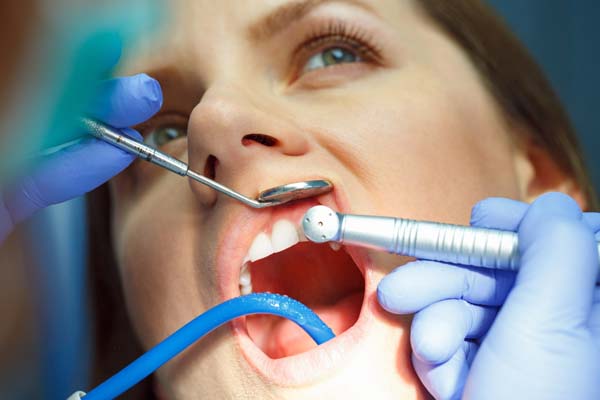Types of Crowns Used for Dental Restoration

When a tooth is chipped, decayed, or otherwise damaged, a crown is a popular method of dental restoration. A crown can both improve the look of a damaged tooth and protect what is left of the natural tooth from further deterioration. Understanding the types of dental crowns available can help when making a decision about which type is right.
Crowns involving metal
Strength and durability are two of the main reasons many people choose a metal crown.
Gold
Typically created from a fusion of gold with different metals, including copper, nickel, and chromium, gold crowns are known for being highly resistant to wear and tear. The metallic color of these crowns makes them a better solution for restorations in the back of the mouth, as patients tend to not prefer a crown to be noticeable. Because the back teeth tend to absorb more of the chewing force, gold crowns can be an ideal solution for a molar restoration.
Porcelain-fused-to-metal
This type of crown has a porcelain coating over the top of a metal cap. The combination produces a more aesthetically appealing crown that is still strong because of its metal structure. In certain cases, the metal cap may cause gray discoloration at the gumline, so using this type of crown on a front tooth can be a risk.
Metal-free crowns
Crowns made without metal are especially appealing for dental restoration on front teeth. In addition to looking more natural, they are biocompatible and toxin-free. This can be a good solution for those with a metal allergy.
All-porcelain
The natural look of all-porcelain crowns make them an extremely popular choice among patients. Dental professionals are able to create porcelain crowns that match the surrounding natural teeth in size, shape, and color, so the crown is not noticeable. While this type of crown can last a long time, it has to be well taken care of. It is not as durable as a gold crown, and those who grind or clench their teeth may want to consider other options.
Zirconia
Although zirconia crowns do not contain metal, this type of crown is stronger and more durable than one made of porcelain. These crowns look very natural and can last many years. Because most dental professionals can cut and shape a zirconia crown on site instead of having it created by a dental lab, the process of getting this type of crown is usually faster.
Lithium disilicate
A newer material made completely of ceramic, lithium disilicate is extremely thin and lightweight. This allows it to look completely natural, even at close range. However, because it is a recently developed type of crown, not as many dental professionals offer it as an option yet.
Conclusion
When trying to decide which type of crown could be the right choice for a dental restoration, it is helpful to consider both the location of the crown as well as the amount of daily wear and tear it will endure. Teeth towards the back of the mouth where more of the chewing force is concentrated could benefit from a gold or porcelain-fused-to-metal crown, while the natural appearance of metal-free crowns make them an aesthetically pleasing option for front teeth.
Are you considering dental restoration in the Palm Desert area? Get more information at https://totalcareimplantdentistry.com.
Check out what others are saying about our dental services on Yelp: Dental Restoration in Palm Desert, CA.
Recent Posts
At some time or another, most individuals will need dental restoration. Restoring teeth is necessary when the teeth are in poor condition due to decay or a lack of proper oral care. Modern dentistry offers a wide variety of options for dental restorations.There are so many fantastic alternatives when it comes to dental restorations that…
Getting a dental restoration is a way to repair teeth that are damaged, including chipped or cracked teeth, cavities, and worn-down enamel. There are different types of dental restorations available. The recommended restoration will depend on the type of tooth damage, the location of the tooth that is damaged, and the patient’s treatment preference. This…
The term dental restoration refers to different procedures that enhance the appearance of teeth, including dental crowns, composite bonding, veneers, dentures, and implants. These restorations serve a specific purpose and some can even correct multiple issues at once. Patients often want to know how long they can expect their new dental restoration can last. Read…
Gum disease, trauma or tooth decay are all reasons a person’s tooth may fall out, but a dentist can replace it using a dental restoration. There are three main options patients can consider to remediate the situation.While protecting a patient from any tooth loss is generally the primary goal of dentists, restoring a missing tooth…


